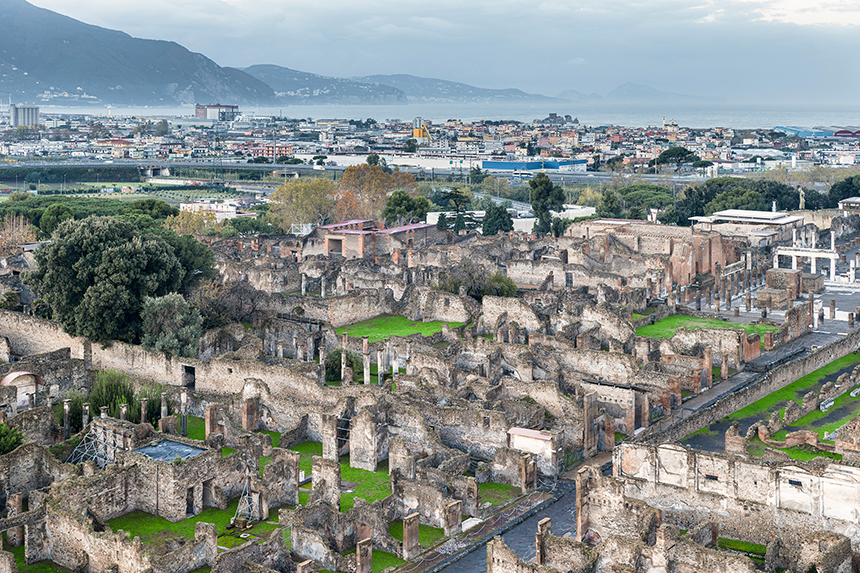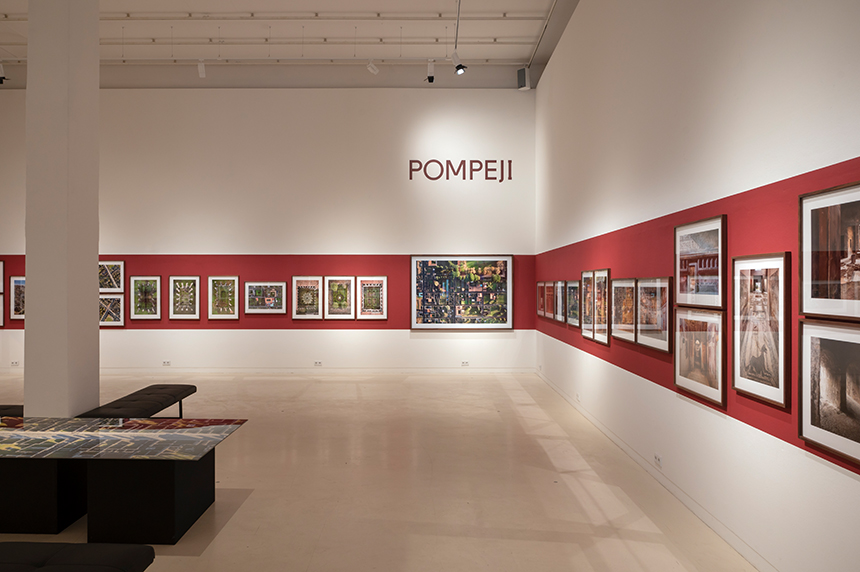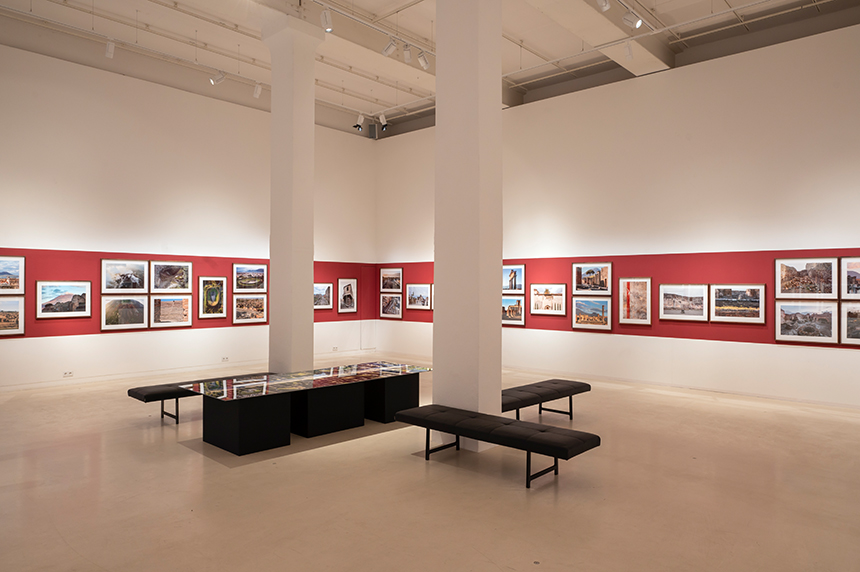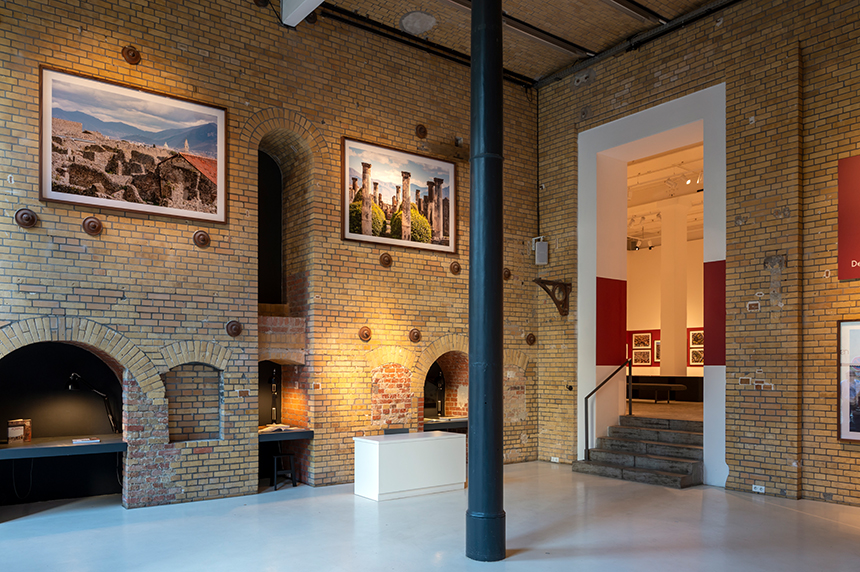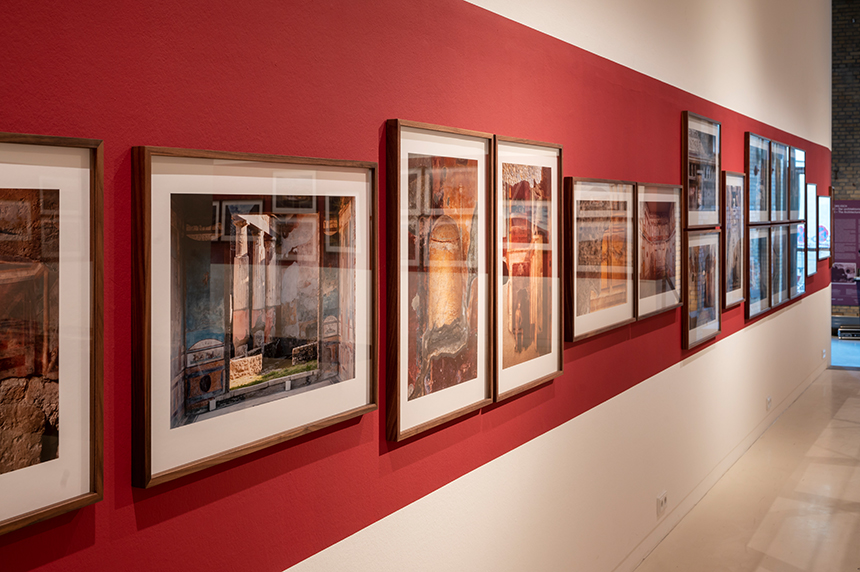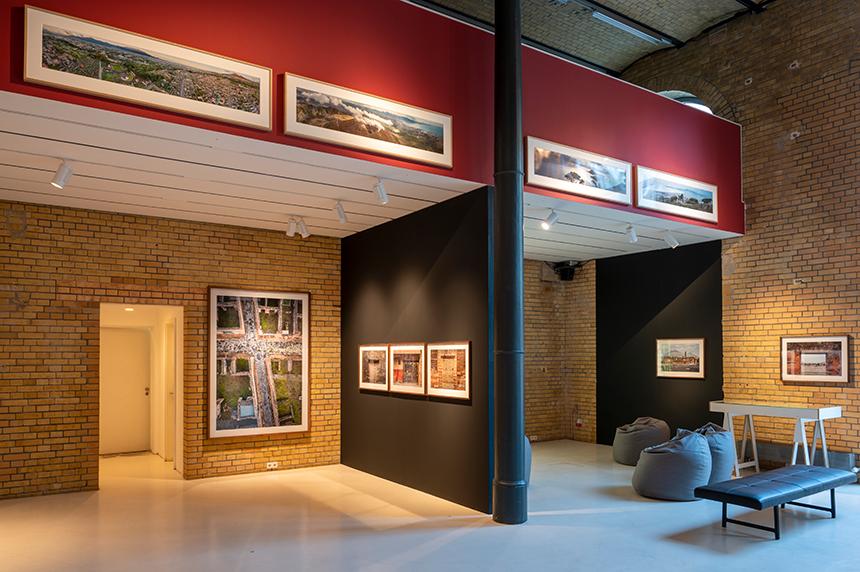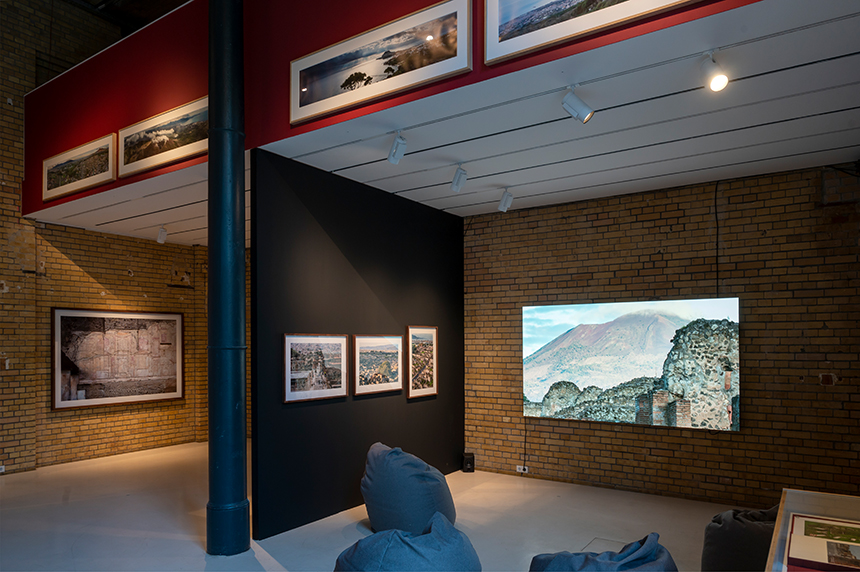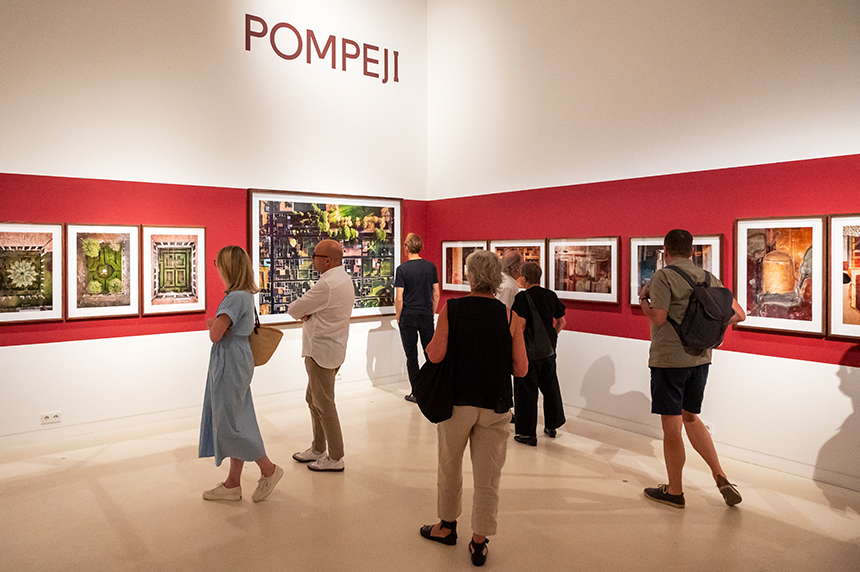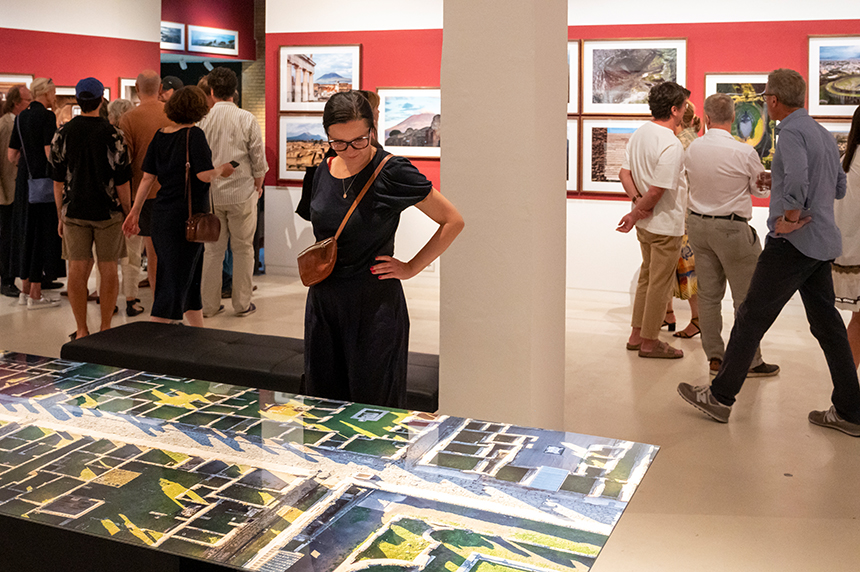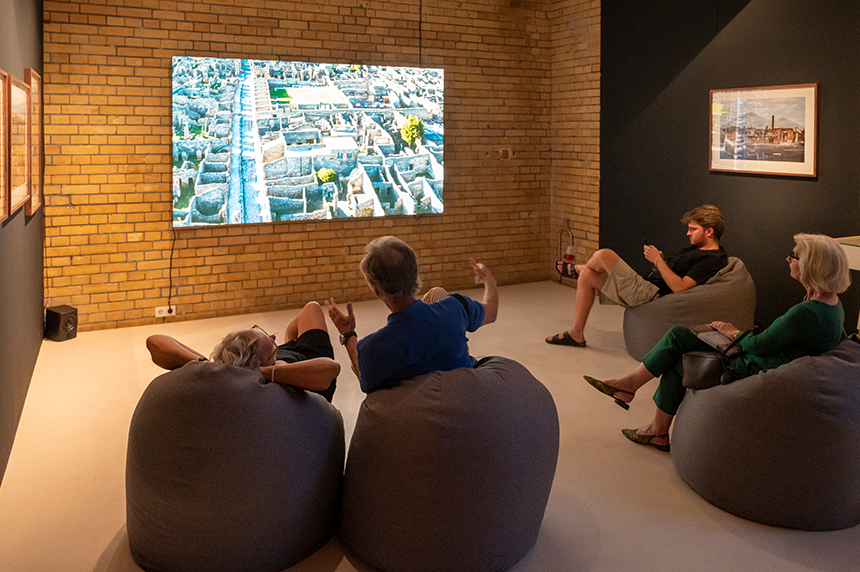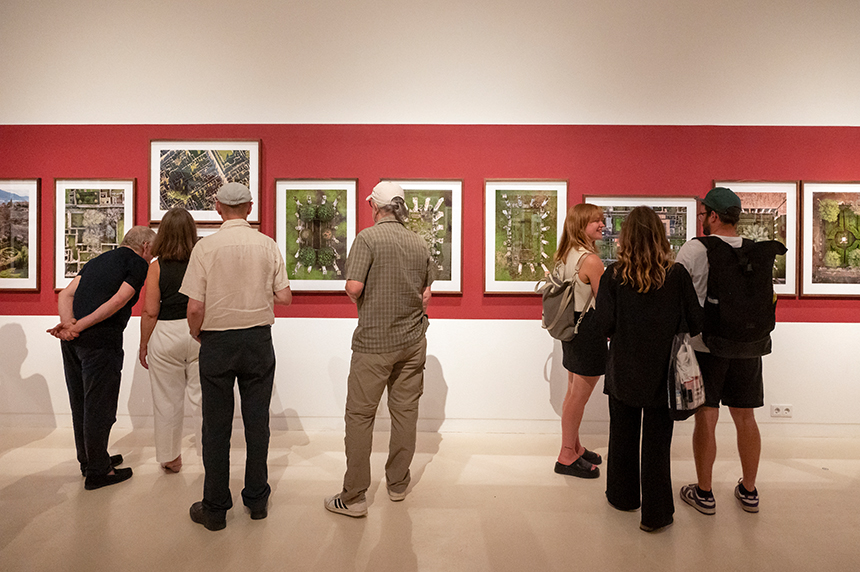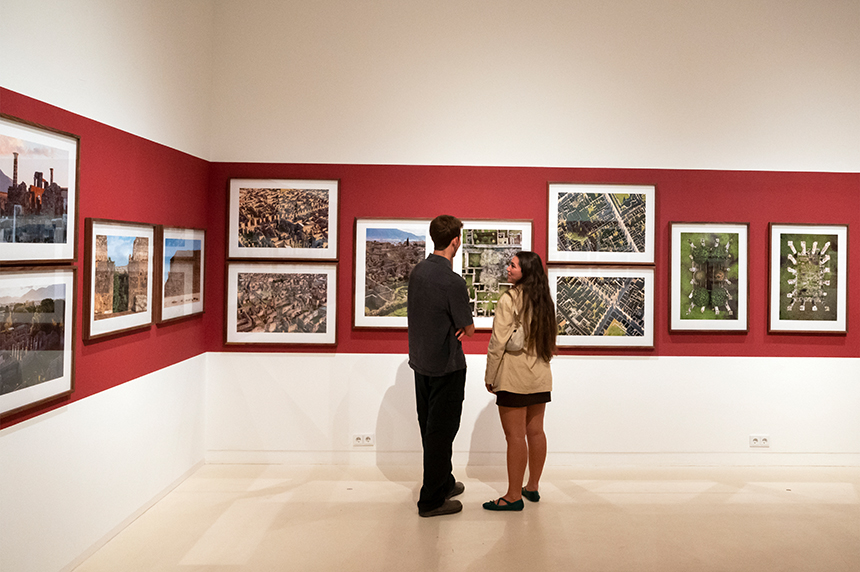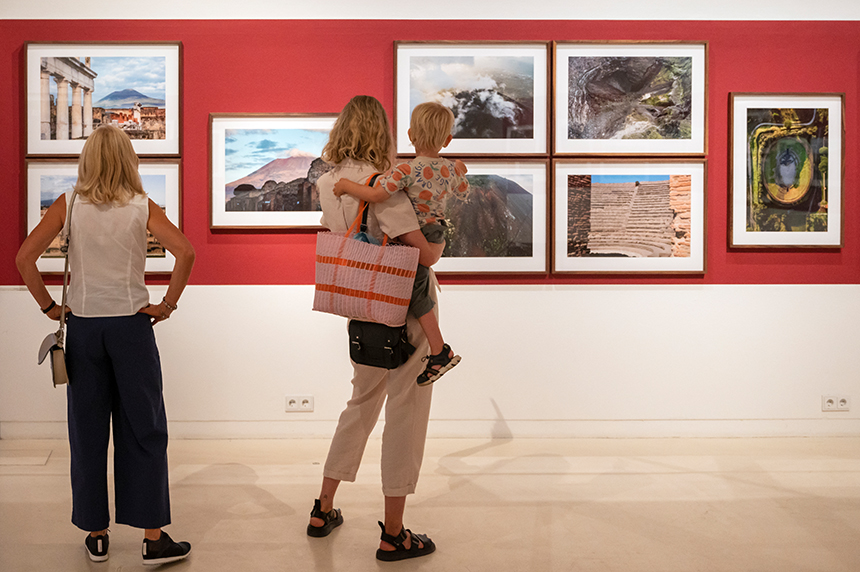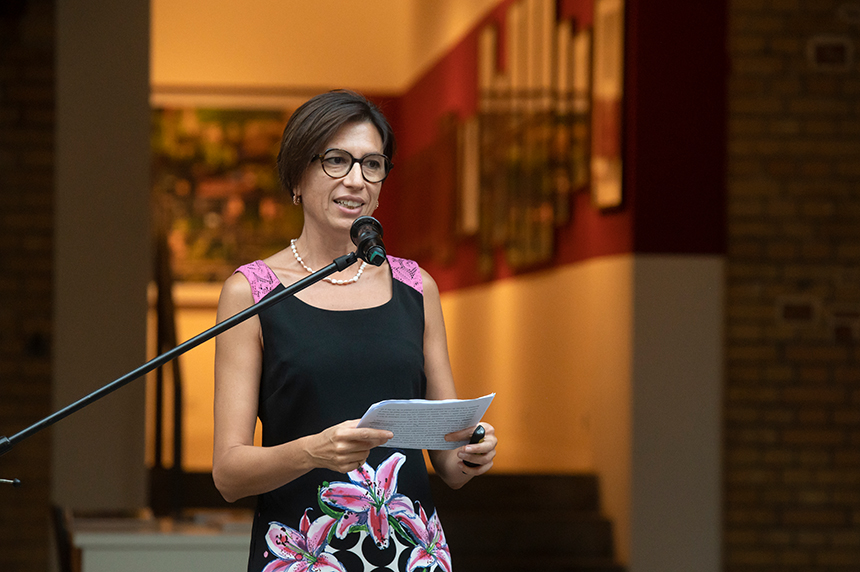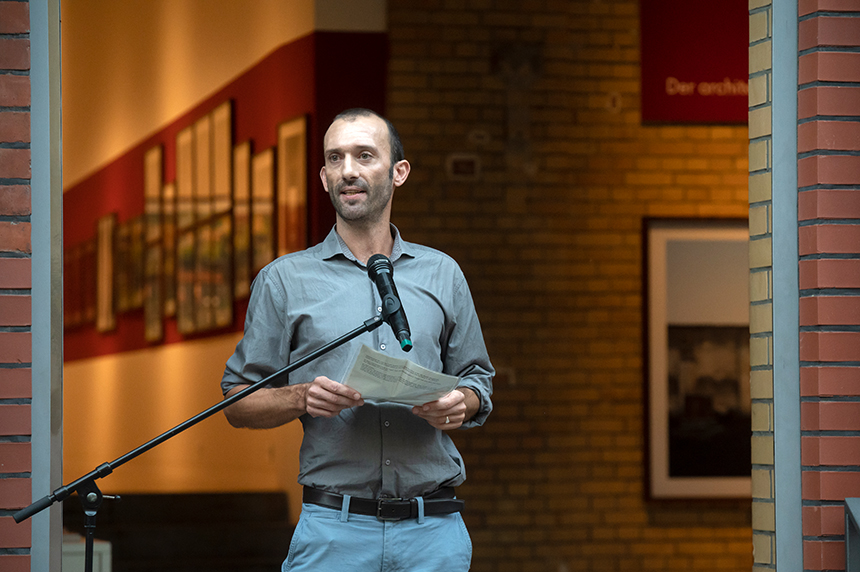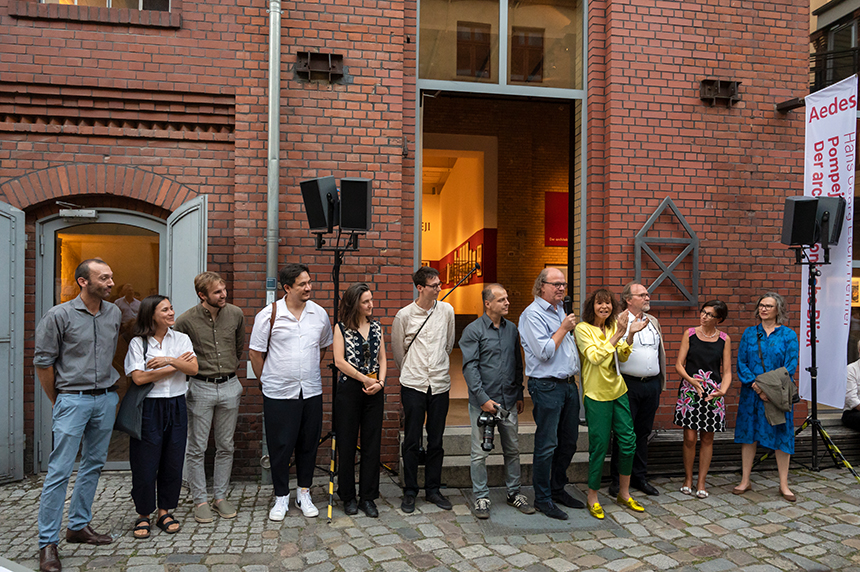Pompeii has supposedly been already ‘fully photographed‘. But now the internationally renowned architectural photographer Hans Georg Esch and his team are opening up astonishing new perspectives on the over 2,500-year-old Roman city, which was buried when Mount Vesuvius erupted in 79 AD. Known for their iconic images of the architecture of global mega-cities, the photographic work of the team HGEsch in Pompeii shows the excavated sites as part of today‘s metropolis of Naples at the foot of the volcano and illustrates the parallels and connections between ancient urban planning and our contemporary cities. For the first time, the exhibition presents more than 80 of these magnificent photographs of what are probably the best-preserved remains of ancient Roman cities worldwide, taken from a 21st century perspective. The once vibrant and lively, then buried and now in ruins urban structure becomes more tangible than ever before.
Pompeii is widely known as the ancient city in Campania by the Gulf of Naples that was buried by the eruption of Mount Vesuvius in 79 AD, but at the same time remained preserved under the volcanic ash. The rediscovery in the 18th century marked the beginning of the city's second history. Since then, Pompeii has become an important subject of archaeology and the study of the ancient world and is today one of the best-preserved ruin cities of this era. Pompeii's remains are located in the municipal area of today's town of Pompei, whose buildings are directly adjacent to the excavations. Visitors who wander through the original alleyways in the Parco Archeologico di Pompei can get a sense of life in a bygone era. Those buildings, shops and everyday objects that are still completely intact, e.g. amphorae, tools, brick counters and jewellery, allow visitors to immerse themselves in daily life in the city of that time.

Pompeii – The Architectural Eye; HGEsch © HGEsch / Ministero della Cultura. Parco Archeologico di Pompei
"For me, Pompeii is a showplace," says architectural photographer Hans Georg Esch, "a special attraction for me was to capture the daily presence of distant history in our time, and not just our present day, which is dominated by contemporary architecture."
The photographs by HGEsch reveal much about the people's lives in the city through the urban fabric and architecture depicted. They also document their similar and therefore comparable structures to today's metropolises. The works of the precisely observant photo artist and his team not only capture the beauty of the ancient city, but also reveal the vulnerability of the human habitat. They thus invite the viewer to engage with the history of the place and its significance for modern urban development. It is clearly recognisable that Pompeii is not just history for Hans Georg Esch, but relevant for the present. The photos show the ruins, which lie separate from the present-day city, as a functioning area in itself, but at the same time as part of the metropolis of Naples and the surrounding landscape of Campania. This architectural photographic approach opens up a new perspective on the important world heritage site in southern Italy.

Pompeii – The Architectural Eye; HGEsch © HGEsch / Ministero della Cultura. Parco Archeologico di Pompei
This exhibition presents a variety of views on Pompeii, including drone shots and photographs from upper floors that are inaccessible to visitors of the archaeological site. The photographed panoramas also highlight the holistic dimension of humankind and nature, the topography of the region characterised by the volcano and the urban structures of the ruins.

Pompeii – The Architectural Eye; HGEsch © HGEsch / Ministero della Cultura. Parco Archeologico di Pompei
The Exhibition
The front exhibition space at Aedes Architecture Forum is dedicated to several spectacular large-format photographs and a film-like animation of photos by HGEsch, which immerse visitors in historical Pompeii. Around 80 photographs of buildings and structures can be seen on an earthy red backdrop, typical of Pompeii, in the second exhibition space. In addition, a large-scale aerial photograph taken with drones provides an overview of the ancient city, its organisation and structures, as well as its relationship to modern-day Pompei. Until now, these could only be seen on a giant model in the National Museum in Naples.
Following City and Structure (2008) and House and Horizon - Transformations (2021), Pompeii – The Architectural Eye is HGEsch's third monographic exhibition at the Aedes Architecture Forum.

Pompeii – The Architectural Eye; HGEsch © HGEsch / Ministero della Cultura. Parco Archeologico di Pompei
About HGEsch
HGEsch, founded by Hans Georg Esch (*1964), is one of the leading international studios for architectural photography of our time. In 2022 and 2023, HGEsch received the Architecture Photography MasterPrize awarded at the Guggenheim Museum and in 2023 was honoured as the best company for architectural photography and film worldwide at the Loop Design Award. Esch and his team give the built environment a scenic pictorial quality. In doing so, they have created countless iconic views of today’s international architecture. As contemporary witnesses to the megacities of our world – its urban and landscape structures - they have been portraying a variety of urban contexts for over 30 years. With the Pompeii series, Hans Georg Esch and his team present a completely new view of the city, which for centuries has revealed more buried secrets than any other place in our cultural sphere.
In September 2024, the book Hans Georg Esch - Der architektonische Blick I - POMPEJI will be published, with a conversation between Hans Georg Esch and Raimund Stecker. The publication accompanies the next stages of the presentation of this photo series. HGEsch is a cooperation partner of the Parco Archaeologico di Pompei.
Exhibition lighting
The photo exhibition is illuminated with ARCOS III zoomfocus spotlights from Aedes Cooperation Partner Zumtobel, which are widely used in museums and exhibition centres. More
Project Sponsors
Samsung, Ecophon, Grieger









